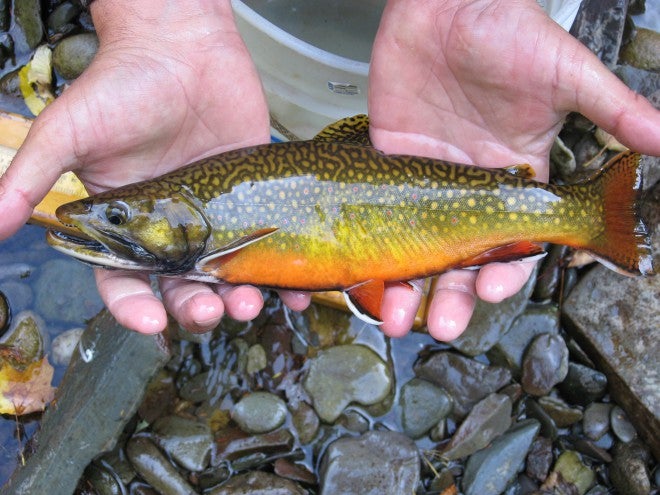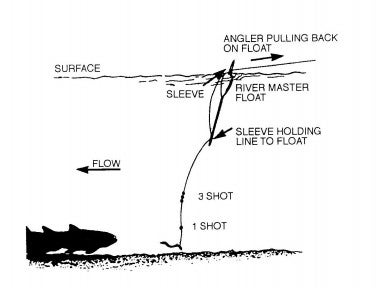Tight Line Trout Tactics
Bob McNally 03.28.16

An enjoyable way of fishing bait for high-water, spring trout is what I call “tight-lining.” Earthworms are great, and they should be used with just a split-shot or two pinched on the line a foot or so above a bait. Cast the bait up-current at about a 45-degree angle. Engage the reel when the bait touches down, keep the rod tip high, and wind in line slowly as the bait swings deep with the flow.
The trick is to keep a “tight line” without moving the bait so it’s presented naturally in current to deep trout. The worm (taken deep with split-shot) bumps and tumbles along bottom, which is a very natural presentation for spring trout used to feeding on earthworms washed into creeks from heavy rain and high stream water. You’ve got to be an astute line watcher fishing this way because rarely will you “feel” a strike through a rod. Instead, the line simply pauses or twitches a bit as a trout takes the drifting worm bait.
Using sophisticated, European-style “Thill” floats with natural bait in streams for high-water spring trout is deadly, too. A “Stream and Brook Master” float or a sensitive “River Master Float” rigged correctly with an earthworm or salmon egg bait can produce trout from spring run-off streams like few other fishing systems. Such floats allow anglers to work selective spots very effectively, and the slightest strike is easily indicated by the precision Thill float system.
Small grub jigs, Mepps-style spinners and spoons can be “tight-lined” for trout, too, and they’re very effective when the water isn’t stained too dark and conditions aren’t a complete wash out. In my experience, lures “tight-lined” work well when I can see them underwater at least a foot or two. Yellow and white curly-tail Mister Twister grubs, silver and gold spoons and spinners all produce. Use lures heavy enough that they work near bottom, but don’t dig into the stream floor. You want them to have plenty of flashy action, but they must be heavy enough to swing deep near river bottom during a retrieve.
With spinners, my best success has been with willow-leaf blade designs during early spring. Little willow-leaf blades flick and flicker easily, which are seen well in cloudy, deep water. And such spinners swing deeper than the same size lures with larger Colorado blades that “cup” more water during a retrieve.
